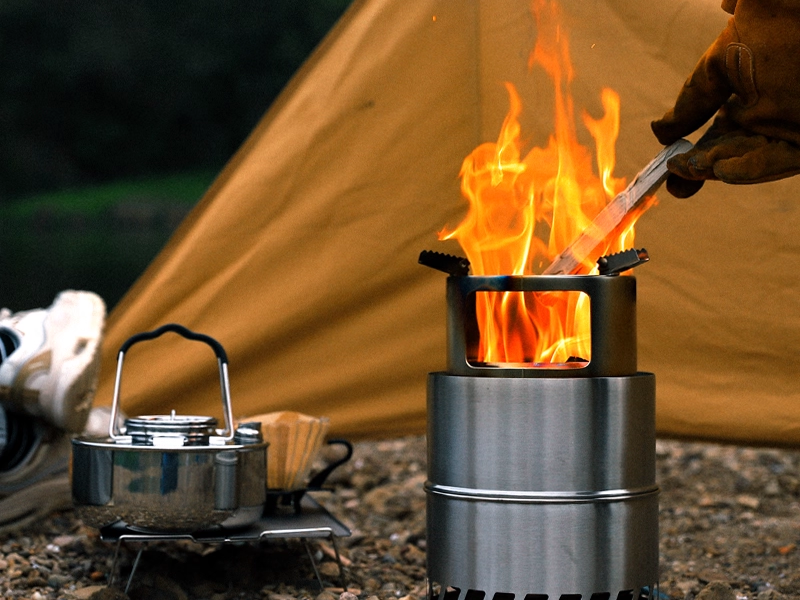A hot meal and a warm cup of tea offer the finest solace during a hike. The stove is the cornerstone of this experience. Faced with a bewildering array of products, understanding the strengths and weaknesses of each stove type is key to making an informed choice.
I. Gas Canister Stoves – The All-Rounder King of Convenience
Working Principle: Burns pre-filled butane/propane gas canisters.
Advantages:
Instant ignition, extremely simple operation.
Precise flame adjustment, from gentle simmer to intense blaze.
Relatively clean combustion, no maintenance required.
Disadvantages:
Efficiency drops in cold temperatures and high altitudes (requires winter gas canisters with higher propane content).
Empty canisters cannot be reused, generating waste.
Canisters themselves carry weight, and resupply may be difficult over long distances.
Suitable for: The vast majority of hikers, particularly for weekend or week-long hikes in three seasons.

II. Alcohol Stoves – The Ultimate in Lightweight and Silence
Principle: Generates heat by burning denatured ethanol (alcohol).
Advantages:
Extremely lightweight and simple construction (can be homemade).
Completely silent operation.
Fuel (alcohol) is readily available and can be decanted.
Disadvantages:
Low heat output and slow heating speed, unsuitable for large-scale snow melting or multi-person cooking.
Difficult to regulate heat output.
Extremely prone to extinguishing in wind; requires a windscreen.
Suitable For: Solo, short-distance hikers prioritising extreme weight reduction with minimal cooking requirements (boiling water only).
III. Liquid Fuel Stoves (Petrol Stoves) — The Expedition and Cold-Weather Workhorse
Working Principle: Burns liquid fuels such as white spirit or kerosene, requiring pre-pressurisation.
Advantages:
Operates reliably in diverse environments, from -30°C to high altitudes.
High fuel energy density offers excellent long-distance cost-effectiveness.
Fuel can be stored in any suitable container.
Disadvantages:
Complex operation requiring assembly, preheating, and priming, with clogging risks.
Requires regular maintenance and emits odours during combustion.
Typically heavier and more expensive than gas canister stoves.
Suitable for: Winter hiking, high-altitude mountaineering, long-distance expeditions.
IV. Wood-burning Stoves — The Survivalist’s Choice for Local Resources
Working Principle: Direct combustion of natural fuels like twigs and pinecones.
Advantages:
Zero fuel cost and weight (collected en route).
Dry, warm combustion with a primitive experience.
Disadvantages:
Unusable during fire bans, in damp conditions, or treeless areas.
Produces black smoke, prone to blackening pot bottoms.
Requires skill for ignition and maintenance.
Suitable for: Forest trekking in areas permitting open flames with abundant fuel sources.
Decision Guide
Novice/Mainstream Choice: Gas canister stove. Hassle-free, reliable, efficient.
Lightweight/Solo Hiker Choice: Alcohol stove. Suitable for those who don’t mind waiting and enjoy tranquillity.
Extreme Conditions Choice: Liquid fuel stove. Defies extreme cold and altitude.
Eco/Survival Experience Choice: Wood-burning stove. Use only where legally permitted.
Finally, remember to pair it with suitable cookware (titanium alloy is lightest, aluminium offers best value) and a lightweight windscreen – these significantly boost cooking efficiency.



